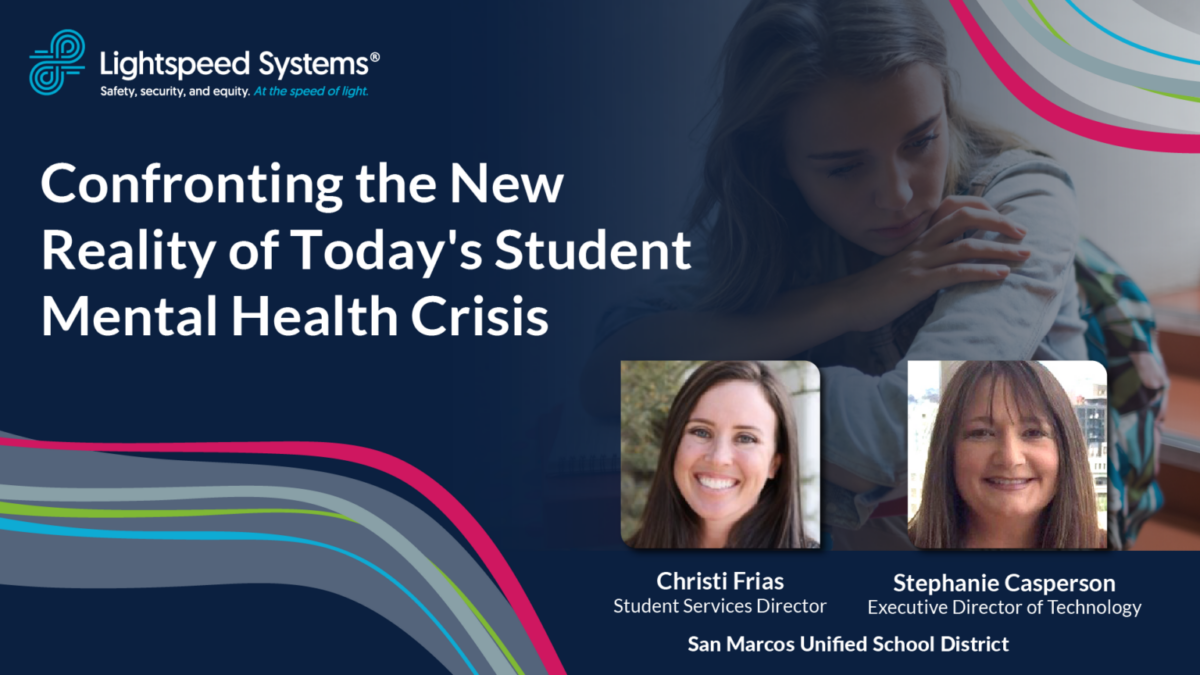What is your school district’s biggest student mental health and well-being challenge?
Is it staffing and resource shortages? District liability concerns? Perhaps it’s an inability to keep up with the 24/7 needs associated with student safety and welfare? Or, does your district suffer from inadequate technologies?
Those were the questions posed at the very start of the webinar, “Confronting the New Reality of Today’s Student Mental Health Crisis,” featuring Christi Frias, Student Services Director, and Stephanie Casperson, Executive Director of Technology, of the San Marcos Unified School District (California). They were a precursor to the discussion of the strategies and tactics deployed by the SMUSD to best serve their student and parent constituents, including its community-wide “Let’s Face It. Together.” campaign.

An intensifying problem
During the pandemic, SMUSD, like school districts across the world, scrambled to put devices in the hands of students to facilitate distance, digital learning. Digital learning blossomed and is now considered a regular part of most school days. However, distance learning delivered additional challenges related to student mental health.
With children off-campus, principles, teachers and resource officers were unable to have close, daily interactions with students. Lost were opportunities to bring students into closed offices and have conduct meaningful conversations. At the same time, students were using devices at all hours of the day, exploring topics that weren’t typical in real-time, face-to-face conversations.
Post-pandemic, Frias discovered a troubling trend. Prior to the pandemic, she classified student mental health as an ongoing problem. Pulling data post-pandemic, she discovered a worsening situation. The number of students experiencing mental health issues is far, far higher than they used to be, and younger and younger students are having suicidal ideations.
The district—the entire community—had an escalating problem.
Addressing the issue from multiple angles
Using data gathered from Lightspeed Alert™ safety and wellness solution, Frias and Casperson set out to address the issue from multiple angles. First, there were programs designed to be preventative, with the “Let’s Face It. Together.” campaign being a highlight.
Data from students at risk of self-harm, collated by site, grade level, month and more proved powerful in establishing a funded priority program in partnership with the city to provide more mental health assistance.
When individual students are identified to be in crisis, Frias, Casperson, and their teams rely on Lightspeed Alert’s human review safety specialists to investigate and evaluate severity, using context and history to escalate urgent situations to the correct response team members. Real-time alerts empower the team at SNUSD to deliver the support needed to students and their families.
Balancing solutions across the spectrum
Providing needed services to protect student mental health cannot be solved by technology alone. Technology continually monitors and proactively alerts district and community personnel so that interventions can be made. However, equal attention must be given to additional proactive measures throughout the community that might very well preempt the need to respond to student mental health crises.
Next steps
For more insights into the comprehensive efforts at SMUSD, watch the webinar on demand, “Confronting the New Reality of Today’s Student Mental Health Crisis.”

